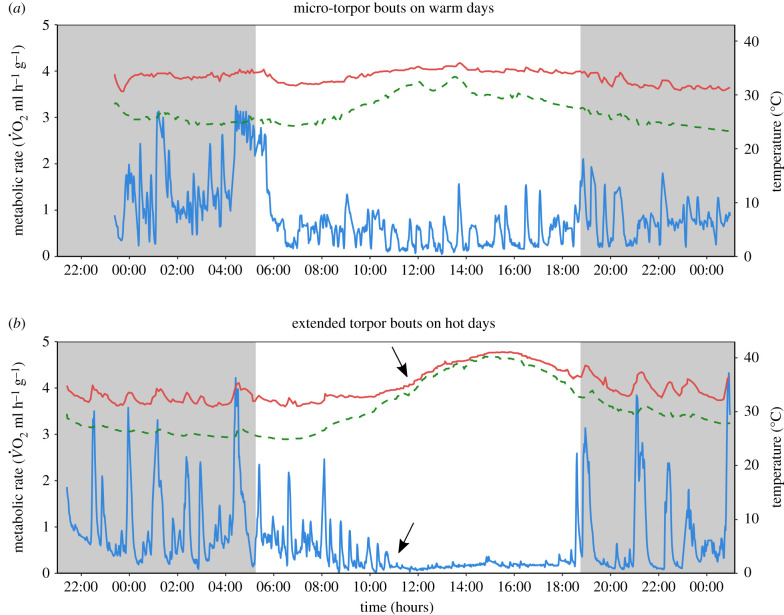Figure 1.
Two new modes of torpor in a tropical bat species. Metabolic rate as O2 (MR, ml h−1 g−1; blue; lower line) and skin temperature (Tskin,°C; red; upper line) of two male individuals of the bat Macronycteris commersoni and the bats' ambient temperature (Ta,°C; green; dashed line). Grey shaded blocks indicate the dark phase. (a) The typical response on regular warm (rainy or cloudy) days. Under these conditions, bats alternated between regular resting MR and micro-torpor bouts (12.4 ± 10.5 min) over the course of their usual inactive phase (approx. 05:30–18:30 h). (b) The response of bats on hot days. When Ta exceeded euthermic body temperature, the bats extended their torpor bouts, which lasted until the beginning of their active phase in the late afternoon when Ta had decreased again (293.6 ± 101.2 min). The arrows highlight the decline in MR and almost simultaneous increase in Tskin, which passively followed Ta, during extended torpor up to 42.9°C indicating that bats tolerated hyperthermia while torpid (see electronic supplementary material, figure S1 for two examples of female bats showing the same patterns). (Online version in colour.)

